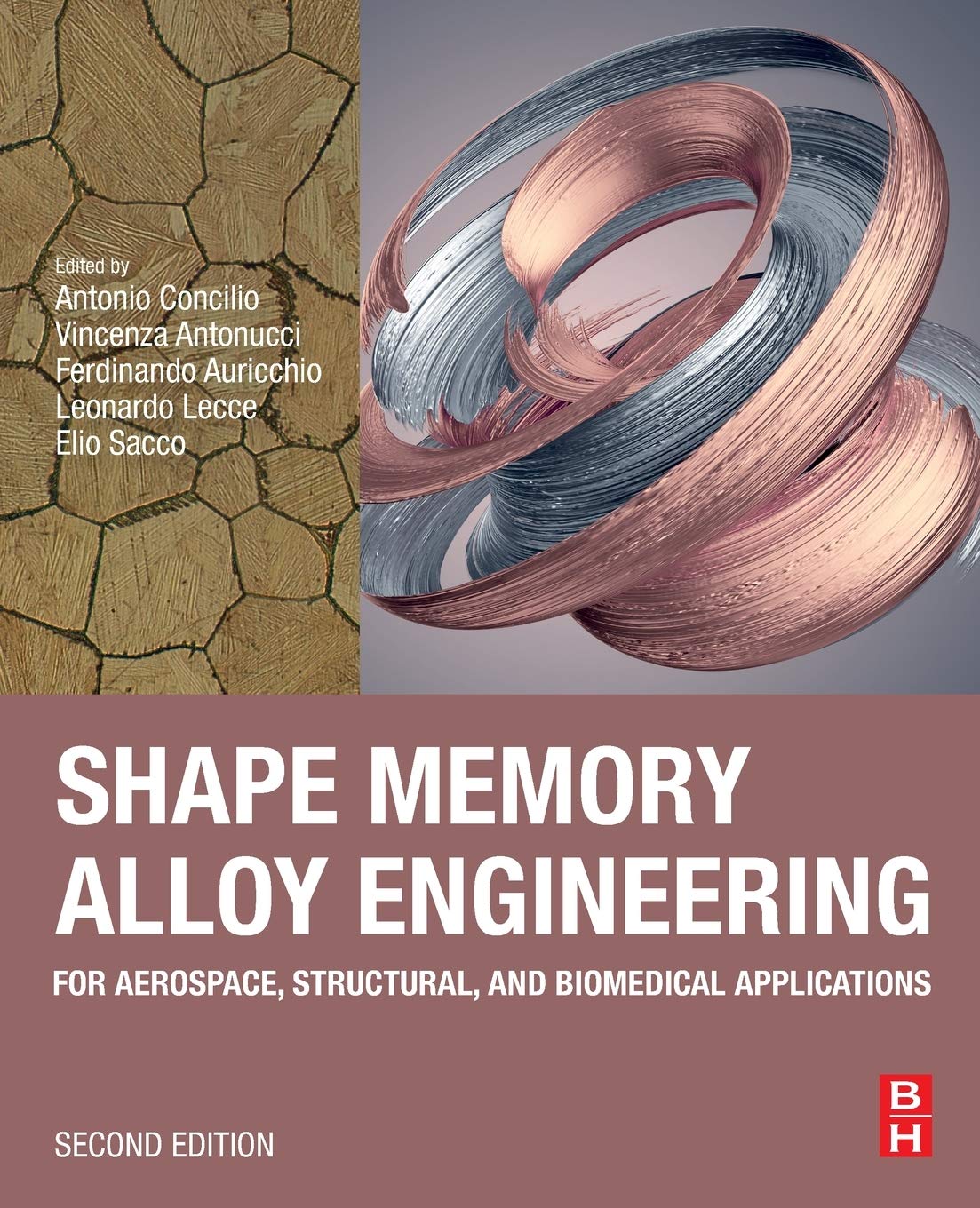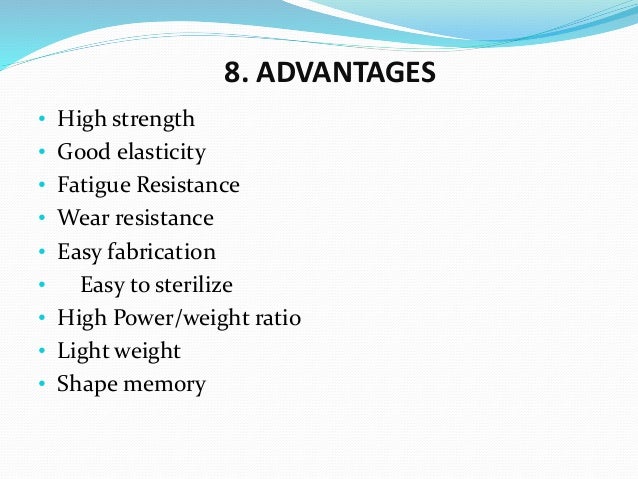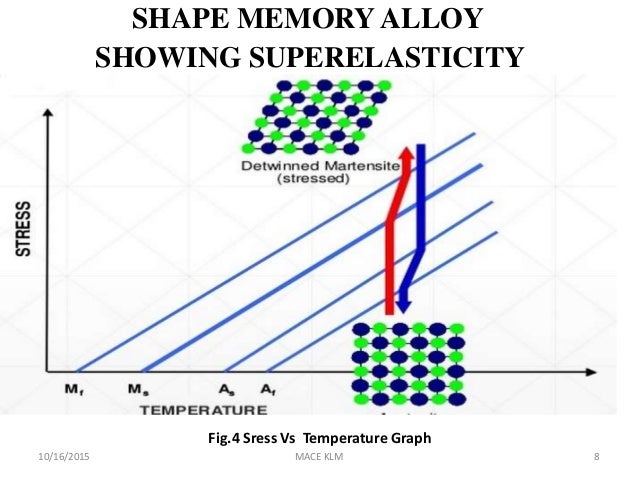Shape Memory Alloy Presentation
| Introduction to Shape Memory Alloy (SMA) | ||
|---|---|---|
| Shape Memory Alloy (SMA) is a unique class of materials that can recover their original shape after being deformed, due to a phase transformation. SMA is typically composed of a combination of metals, such as nickel, titanium, and copper. The shape memory effect is a result of the material's ability to undergo a reversible solid-state phase transformation. | ||
| 1 | ||
| Shape Memory Effect | ||
|---|---|---|
| The shape memory effect is the ability of SMA to return to its original shape when subjected to a specific stimulus, such as heat, stress, or magnetic field. Two distinct phases of SMA play a crucial role in the shape memory effect: austenite (high-temperature phase) and martensite (low-temperature phase). Heating the SMA above its transformation temperature causes it to transition from the martensitic phase to the austenitic phase, resulting in shape recovery. | ||
| 2 | ||
| Superelasticity | ||
|---|---|---|
| SMA also exhibits a unique property called superelasticity or pseudoelasticity. Superelasticity allows SMA to undergo large deformations (up to 8%) and fully recover their original shape upon the removal of the applied stress. This property makes SMA ideal for applications requiring high flexibility, such as biomedical devices and aerospace engineering. |  | |
| 3 | ||
| Applications in Biomedicine | ||
|---|---|---|
| SMA has found numerous applications in the field of biomedicine, including orthodontic wires, stents, and surgical instruments. The superelasticity of SMA enables orthodontic wires to exert continuous light forces, resulting in more comfortable and efficient teeth alignment. SMA stents can be inserted in a compressed form and expanded using body heat, reducing invasive procedures in cardiovascular treatments. | ||
| 4 | ||
| Applications in Aerospace | ||
|---|---|---|
| SMA's shape memory effect and superelasticity make it suitable for various aerospace applications. SMA actuators can be used in aerospace control systems to provide precise and reliable movement. SMA can also be used in morphing wings, where the material changes its shape in response to aerodynamic conditions, enhancing aircraft performance. | ||
| 5 | ||
| Other Applications | ||
|---|---|---|
| SMA is utilized in robotics to create artificial muscles and joints, allowing for more natural movements. Smart textiles incorporating SMA can adjust their shape, providing better comfort and fit. SMA is also used in the automotive industry for various applications, including engine mounts, valve actuators, and exhaust systems. | ||
| 6 | ||
| Advantages of Shape Memory Alloy | ||
|---|---|---|
| Shape memory alloys offer high strength, excellent fatigue resistance, and corrosion resistance. They can undergo thousands of shape memory cycles without significant degradation. The ability to generate large recoverable strains and high actuation forces makes SMA highly versatile in engineering applications. | ||
| 7 | ||
| Challenges and Limitations | ||
|---|---|---|
| SMA materials can be costly due to the complexity of the manufacturing process and the specific alloy compositions required. The transformation temperature range may limit the operating conditions of SMA-based devices. SMA's response time can be relatively slow, which may affect applications requiring rapid actuation. | ||
| 8 | ||
| Future Trends | ||
|---|---|---|
| Ongoing research focuses on developing new SMA compositions with enhanced properties, such as improved shape recovery and lower transformation temperatures. Advances in additive manufacturing techniques allow for the fabrication of complex SMA structures, expanding potential applications. The integration of SMA with other smart materials, such as shape-memory polymers, opens up new possibilities for multifunctional materials. | ||
| 9 | ||
| Conclusion | ||
|---|---|---|
| Shape memory alloy is a fascinating class of materials with unique properties, including shape memory effect and superelasticity. SMA finds applications in various fields, including biomedicine, aerospace, robotics, and automotive. Ongoing research and technological advancements will continue to expand the potential of SMA in the future. | ||
| 10 | ||
| References (download PPTX file for details) | ||
|---|---|---|
| Otsuka, K., & Wayman, C. M. (1998). Shape mem... Pelton, A. R., & Pelton, R. B. (2015). Engine... Bose, S., & Sastry, T. P. (2010). Shape memor... |  | |
| 11 | ||








